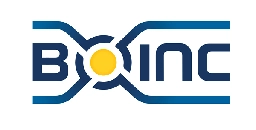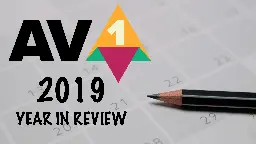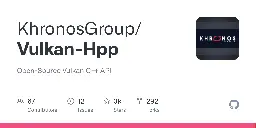Open Standards
- BOINC is an open standard for distributed/volunteer computingsopuli.xyz BOINC4Science - Sopuli
Did you know you have the power to discover new anti-cancer drugs 👩⚕️, map the galaxy 🔭, and find new subatomic particles ⚛️ using your computer’s spare computational power? Join us in using the BOINC software to advance the progress of science. We are a newbie-friendly space, please feel free to...

If you have a massive computational workload that you want to distribute across a variety of devices and OSes, you can use BOINC for this purpose. BOINC is an open protocol used by the BOINC client, which can attach to several different projects at a time and compute for all of them. Anybody can start a BOINC project and distribute work, it is a permissionless network. End users decide which BOINC projects to contribute CPU/GPU cycles to.
BOINC is currently used by major universities and research institutions around the world for everything from cancer research to finding pulsars and gravitational waves. Their network of computing volunteers contributes petaflops of computation daily to open science projects.
- Open19 Project versus the Open Compute Project | Datacom Solutionspaigedatacom.com Open19 Project versus the Open Compute Project | Datacom Solutions
By now, most people have heard of Open Compute which boasts membership comprised of Facebook, AT&T, Google, Microsoft, and other large data center pla...

Keep in mind that the article is kind of old, from 2017. I unfortunately couldn't find similar comparisons from more recently.
- Eddy Cue wanted to bring iMessage to Android in 2013 - Not surprisingly Big Tech's want to lock users into their own Walled Gardens
This is the reason why I've never used an OEMs app that is unique to them only (well also because I have many friends using different phone brands and OSs). Even when I had an iPhone 3 (and now an iPhone 12 Pro) and a Samsung Android phone, I always stuck to using a service that was generally available across devices.
So yes that was why it was easy for me to switch from an iPhone to Android, and back again now in 2021 to an iPhone. Inter-operability and compatibility is what we as consumers should be demanding and ourselves choosing. The point is of all my colleagues, and friends and family, are using different phones and OSs. We should resist using a product locked only into one ecosystem.
There is a rumour (and only that) that Apple may consider adopting RCS, and if so that would change the game somewhat (and will have some effect on WhatsApp, Telegram and others). SMS was a universal messaging standard dictated by the cellular networks, but it does not look like Big Tech companies will voluntarily support a single standard otherwise. What we should have though is a mandatory open standard used by all that is not aligned to any specific brand or provider. This is something consumers should push governments to adopt.
A parting thought: Imagine a world with no single standard for e-mail or SMS messaging...
See https://www.theverge.com/2021/4/27/22406303/imessage-android-eddy-cue-emails-apple-epic-deposition
#technology #openstandards #apple #instantmessaging
- AV1 2019: A Year In Reviewwww.singhkays.com AV1 2019: A Year In Review
Introduction It’s not often you see so many logos of tech giants on one page backing the same technology. In my experience, every enterprise has developed a case of NIH and come up with their standards. No surprise then that there’s an XKCD describing this phenomenon! But when the AV1...

- If you play video games, take a moment to appreciate the fact that Vulkan is open source.github.com GitHub - KhronosGroup/Vulkan-Hpp: Open-Source Vulkan C++ API
Open-Source Vulkan C++ API. Contribute to KhronosGroup/Vulkan-Hpp development by creating an account on GitHub.

- A few Matroska tricks
Matroska is a multimedia container widely know for it's video format (mkv). Lesser known are the audio (mka) and subtitles (mks) formats. Also the stereoscopic/3D format (mk3d). Aside from being open and royalty-free, why are these formats interesting?
Tools
MKVToolNix is a CLI (optional GUI) tool to work with Matroska files. It works with mkv and mka, which are the two formats I tested. It's a single tool to work with both audio and video formats.
Features
Matroska is a do-it-all "universal" container that does many things well. The most interesting being:
- Chapters. For an audio file that means an entire album or audiobook can be contained in a single large mka file splitted by chapters, similar to m4b files. It's easy to make such a file in mkvtoolnix, would save me a lot of time from picking every ogg chapter file in librivox recordings.
- Multiple streams. A single file can hold different codecs (e.g. vorbis, opus and MP3) or different bitrates and they can be muxed from a supported player. Video players commonly support it whereas I am not aware of audio players with this feature.
- Subtitle embedding. Closed captions are popular in mkv, but mka could also hold an entire timestamped audiobook or music lyrics inside. Haven't tested it though, and I think there's no player that supports such scheme.
See the FAQ for more info.
So, what about MKS?
I couldn't find documentation about it, or even sample files. Maybe you can help.
- AV1 Image File Format (AVIF)www.keycdn.com AV1 Image File Format (AVIF) - KeyCDN
The AV1 Image File Format (AVIF) provides efficient compression for high quality images.



